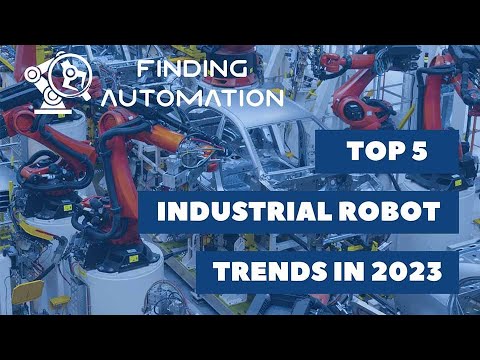Robots are Becoming More Sophisticated and Capable: Top 5 Industrial Robot Trends in 2023
Introduction
In today's fast-paced world, robotic technology is advancing at an unprecedented rate. Robots are becoming increasingly sophisticated and capable, revolutionizing various industries. Industrial robots, in particular, have witnessed remarkable advancements, transforming the manufacturing landscape. In this article, we will explore the top five industrial robot trends expected to shape the industry in 2023.
1. Artificial Intelligence (AI) Integration
Artificial intelligence has been a game-changer in many fields, and the realm of industrial robotics is no exception. As robotic technology continues to advance, AI integration is becoming more prevalent. Industrial robots are now equipped with advanced machine learning algorithms, enabling them to perform complex tasks with precision and adaptability. AI integration allows robots to learn from their experiences and optimize their performance, leading to improved productivity and efficiency in manufacturing processes.
2. Collaborative Robots (Cobots)
Collaborative robots, or cobots, are designed to work alongside human operators, enhancing productivity and safety in manufacturing environments. These robots are equipped with advanced sensors and algorithms that enable them to recognize and adapt to human presence. Cobots can perform tasks that require precision and strength, while also ensuring the safety of human workers. The ability to collaborate seamlessly with humans makes cobots an invaluable asset in industries such as automotive, electronics, and healthcare.
3. Increased Mobility and Flexibility
Industrial robots are no longer confined to fixed positions on assembly lines. The latest advancements in robotic technology have paved the way for increased mobility and flexibility. Mobile robots equipped with advanced navigation systems can move freely within a factory floor, transporting materials and performing tasks in different locations. This enhanced mobility and flexibility enable manufacturers to optimize their production processes and respond quickly to changing demands.
4. Vision-Guided Robotics
Vision-guided robotics is an emerging trend that holds immense potential for industrial applications. These robots are equipped with advanced vision systems, including cameras and sensors, that enable them to perceive and interpret their surroundings. Vision-guided robots can identify objects, locate targets, and navigate complex environments with precision. This technology is revolutionizing industrial tasks such as pick-and-place operations, quality inspection, and assembly processes.
5. Increased Connectivity and Data Exchange
In the era of Industry 4.0, connectivity and data exchange play a crucial role in optimizing manufacturing processes. Industrial robots are now equipped with advanced communication capabilities, allowing them to be interconnected with other machines and systems. This connectivity enables seamless data exchange, real-time monitoring, and remote control of industrial robots. By harnessing the power of connectivity, manufacturers can achieve higher levels of automation, efficiency, and productivity.
Conclusion
The rapid advancement of robotic technology has paved the way for a new era of industrial automation. As industrial robots become more sophisticated and capable, they are transforming various industries, enhancing productivity, and improving safety. The top five trends discussed in this article highlight the exciting developments expected in the industrial robot landscape in 2023.
Check the coil packing solution with a leading manufacturer for professional and efficient solutions in industrial robotics. Industrial Robot
"Revolutionizing Manufacturing: Unveiling the Future of Industrial Robots in 2023"






